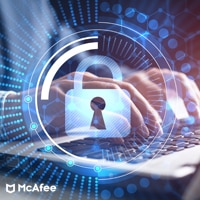Why May 2021 Represents a New Chapter in the “Book of Cybersecurity Secrets”
If the situation sounds ominous, it is. The words and guidance outlined in the DoDZTRA and EO must be followed up with a clear path to action and all the stakeholders, both public and private, are not held accountable for progress. This should not be another roll-up reporting exercise, time to study the situation, or end up in analysis paralysis thinking about the problem. Our adversaries move at speeds we never anticipated by leveraging automation, artificial intelligence, machine learning, social engineering, and more vectors against us. It’s time for us to catch up and just very possibly think differently to get ahead.

May 2021 has been an extraordinary month in the cybersecurity world, with the DoD releasing its DoD Zero Trust Reference Architecture (DoDZTRA), the Colonial Pipeline being hit with a ransomware attack, and the White House releasing its Executive Order on Improving the Nation’s Cybersecurity (EO). Add to that several major vendors that our government depends on for its critical operations disclosing critical vulnerabilities that could potentially expose our nation’s critical infrastructure to even more risk, ranging from compromised email and cloud infrastructures to very sophisticated supply chain attacks like the SolarWinds hack, which could have started as early as 2019.
The collective “we” observed what happened when ransomware hit a portion of the nation’s critical infrastructure at Colonial Pipeline. If the extortion wasn’t bad enough, the panic buying of gasoline and even groceries in many of Eastern U.S. states impacted thousands of people seemingly overnight, with help from social and traditional media. It’s too early to predict what the exact financial and social impacts may have been on this attack. I suspect the $4.4M ransom paid was very small in the greater scheme of the event.
There is no way around it: This time our nation must invest in protecting our way of life today and for future generations.
Enter Zero Trust Cybersecurity, which is an architectural approach – not a single vendor product or solution. The DoDZTRA takes a broader view of Zero Trust than the very narrow access control focus, saying it is “a cybersecurity strategy and framework that embeds security throughout the architecture to prevent malicious personas from accessing our most critical assets.” And our most critical assets are data.
May 2021 has provided a wake-up call for public-private cooperation like we’ve never seen before. Perhaps we need to rethink cybersecurity altogether. During his keynote remarks at the recent RSA Conference, McAfee CTO Steve Grobman talked about how “as humans, we are awful at perceiving risk.” Influenced by media, anecdotal data, and evolutionary biology, we let irrational fears drive decision-making, which leads humans to misperceive actual risks and sub-optimize risk reduction in both the physical and cyber world. To combat these tendencies, Steve encourages us to “be aware of our biases and embrace data and science-based approaches to assess and mitigate risk.”
These practices require full visibility into all activity across all layers — from endpoints to the network (which includes cloud) — to enable analytics that can detect suspicious activity. The ability to have early or advanced warnings of global and local threat campaigns, indicators of compromise, and the capability to deliver proactive countermeasures is a must-have as part of an organization’s defensive strategies.
NSA also recently weighed in on Zero Trust, recommending that an organization invest in identifying its critical data, assets, applications, and services. The NSA guidance goes on to suggest placing additional focus on architecting from the inside out; ensuring all paths to data, assets, applications, and services are secure; determining who needs access; creating control policies; and finally, inspecting and logging all traffic before reacting.
If you believe in a good conspiracy theory, the month of May 2021 could provide great material for a made-for-TV movie. Earlier I mentioned that the collective “we” needs to be held accountable. Part of that accountability is defining success metrics as we take on a new path to real cybersecurity.
The Zero Trust guidance from both DoD and NSA is worth following. It’s also worth reprising the concept of defense in depth – the cybersecurity strategy of leveraging multiple security mechanisms to protect an organization’s assets. Relying on a single vendor for all an organization’s IT and security needs makes it much easier for the adversary.
The post Why May 2021 Represents a New Chapter in the “Book of Cybersecurity Secrets” appeared first on McAfee Blogs.
This post was first first published on Enterprise – McAfee Blogs’s website by Ken Kartsen. You can view it by clicking here

